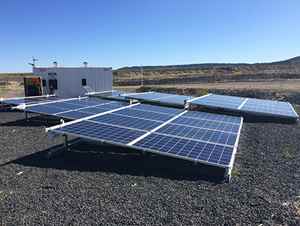The EPA and Infrastructure Sustainability Council of Australia worked together to compile case studies contributed by the construction sector, showcasing innovative and effective approaches to reducing diesel emissions
Does your company or agency have a story to share about reducing diesel emissions from construction equipment? Email air.policy@epa.nsw.gov.au.
Best practice engineering and education
Best practice engineering and education (PDF 3MB)
This case study from CPB John Holland Dragados highlights strategies to reduce diesel emissions in a major infrastructure project - the Sydney Metro Northwest Tunnels and Station Civil Project. Strategies included
- state-of-the-art tunnel ventilation design
- procuring plant and equipment with lower diesel emissions
- implementing administrative and operational controls
- educating workers in the correct use of respiratory protective equipment.
Retrofitting equipment and alternative fuels
Retrofitting equipment and alternative fuels (PDF 1.7MB)
This case study illustrates strategies implemented by Blacktown City Council to reduce diesel emissions by
- retrofitting existing equipment with partial diesel particle filters or diesel oxidation catalyst converters
- procurement policies that preference equipment that meets the highest EU or US emission standards
- using bio-fuel B20 and bulk fuel filtration
- educating drivers and equipment operators on proper use and maintenance of equipment.
Solar Power at Commodore Mine, Queensland

The solar power system at Commodore Mine, Queensland consists of 6 solar panels connected to a container which houses the batteries. Photo courtesy of Downer.
This case study
- illustrates the use of solar power to reduce diesel and CO2 emissions
- demonstrates that incorporating a renewable power supply at construction sites can reduce diesel emissions.
The Downer Group implemented an off-grid power system at the field crib hut at Commodore Mine that had previously been fully powered by a diesel generator. This generator is now used as a back-up to solar energy, meaning it only runs for a few hours each night.
The system consists of six solar panel banks connected to a containerised battery bank. The solar panels run the crib hut and charge the battery bank during the day. At night, the stored energy in the batteries is used and if it is depleted, the diesel-powered generator automatically starts until the solar panels generate energy again. It is estimated that this system has resulted in a 65–80% reduction in diesel and carbon dioxide emissions. The Downer Group will investigate opportunities to utilise this off-grid power system at other projects.
Contact us
If you would like more information about best-practice management of diesel emissions or have a case study to contribute, please air.policy@epa.nsw.gov.au.

